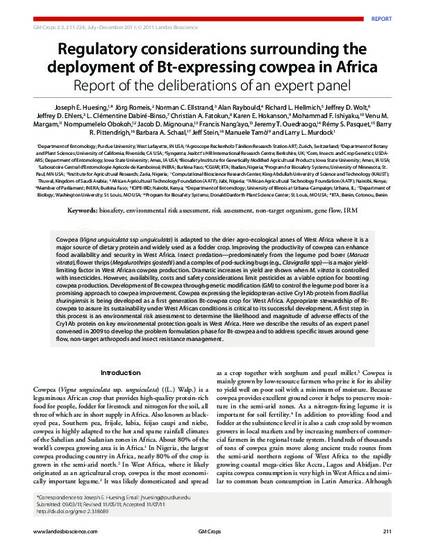
Cowpea (Vigna unguiculata spp unguiculata) is adapted to the drier agro-ecological zones of West Africa where it is a major source of dietary protein and widely used as a fodder crop. Improving the productivity of cowpea can enhance food availability and security in West Africa. Insect predation – predominately from the legume pod borer (Maruca vitrata), flower thrips (Megalurothrips sjostedti) and a complex of pod-sucking bugs (e.g.,Clavigralla spp) – is a major yield-limiting factor in West African cowpea production. Dramatic increases in yield are shown when M. vitrata is controlled with insecticides. However, availability, costs, and safety considerations limit pesticides as a viable option for boosting cowpea production. Development of Bt-cowpea through genetic modification (GM) to control the legume pod borer is a promising approach to cowpea improvement. Cowpea expressing the lepidopteran-active Cry1Ab protein from Bacillus thuringiensisis being developed as a first generation Bt-cowpea crop for West Africa. Appropriate stewardship of Bt-cowpea to assure its sustainability under West African conditions is critical to its successful development. A first step in this process is an environmental risk assessment to determine the likelihood and magnitude of adverse effects of the Cry1Ab protein on key environmental protection goals in West Africa. Here we describe the results of an expert panel convened in 2009 to develop the problem formulation phase for Bt-cowpea and to address specific issues around gene flow, non-target arthropods, and insect resistance management.
Available at: http://works.bepress.com/richard_hellmich/75/

This article is from GM Crops & Food 2 (2011): 211–224, doi:10.4161/gmcr.2.3.18689.